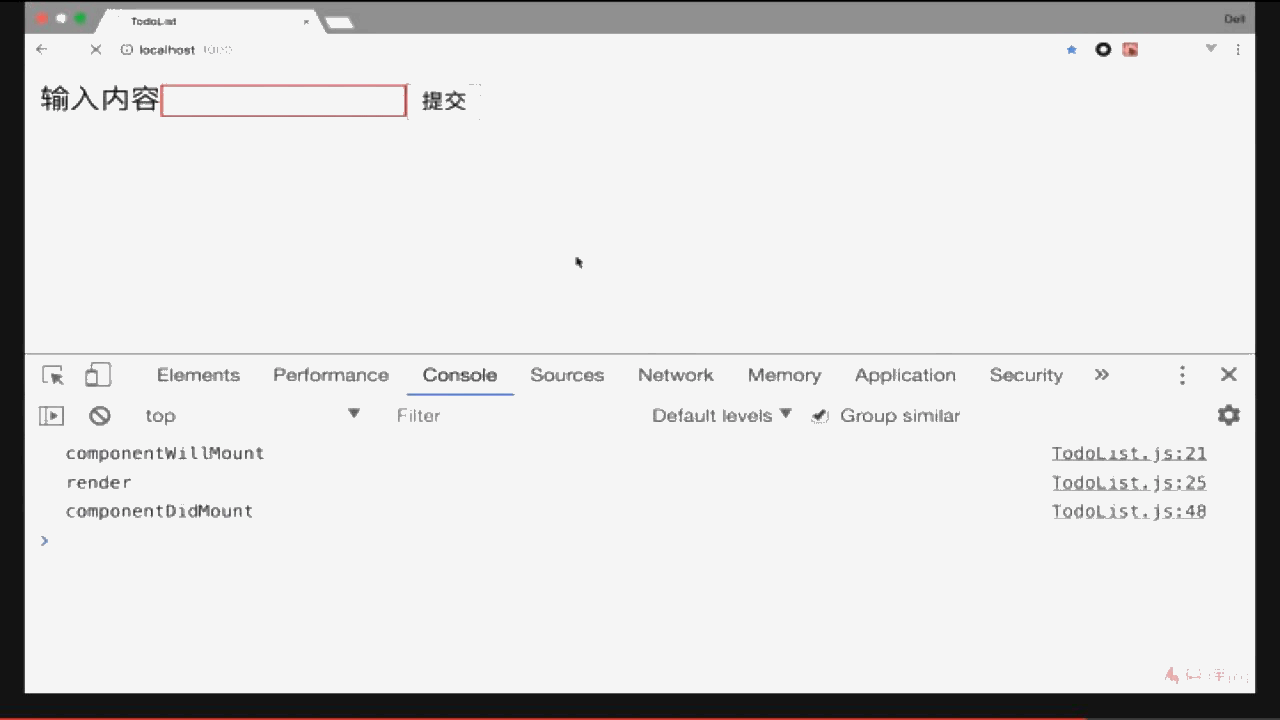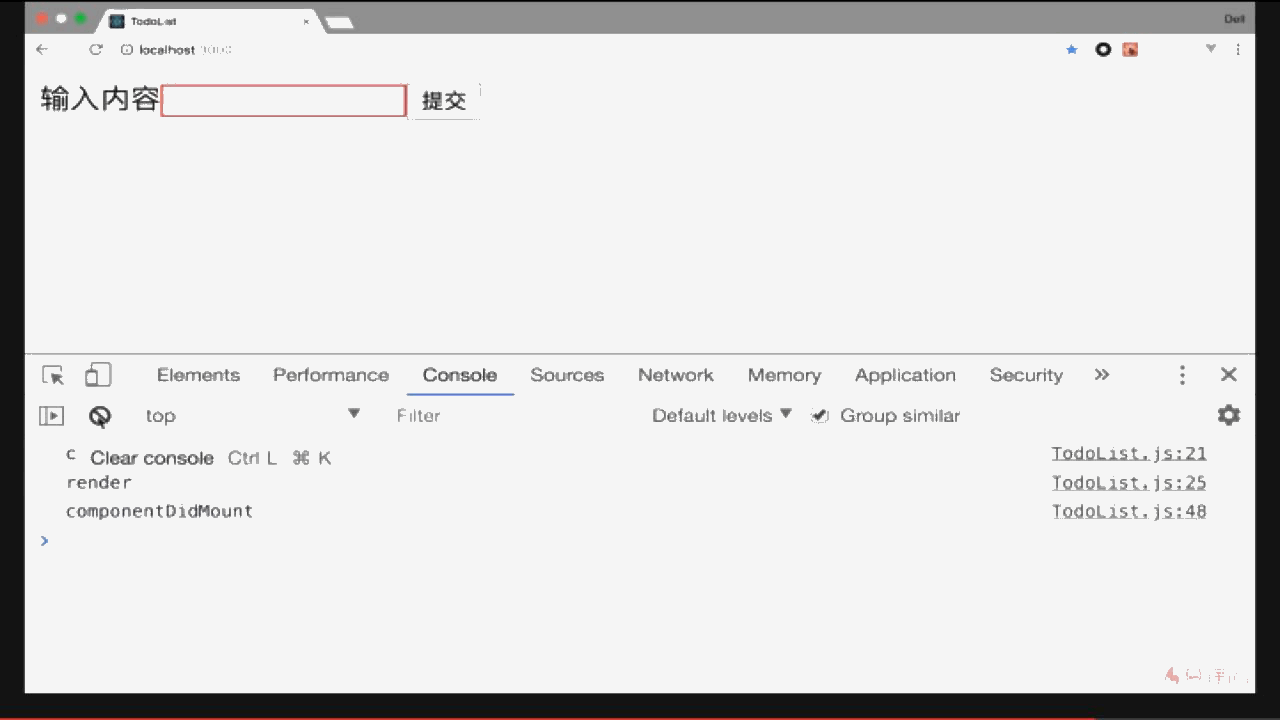React中的生命周期函数(老版本V16.0之前)
React的生命周期函数

什么是生命周期函数:生命周期函数是指在某一个时刻组件会自动调用执行的函数
-
Initialization:初始化
- 执行Constructor,初始state和props
-
Mounting ( 挂载处理 )
- componentWillMount( ) : 在组件即将被挂载到页面的时刻自动执行,在render( )函数执行之前执行
- render( ): 渲染组件
- componentDidMount( ): 组件被挂载到页面之后,自动被执行 (只执行一次,axios请求在此函数中发起)
初始加载页面时:

- Updation ( 更新处理 )
- componentWillReceiveProps( ) : 一个组件要从父组件接受参数,只要父组件的render函数被重新执行了,子组件的这个生命周期函数就会被执行( props数据变更时独有的生命周期 )
- 如果子组件第一次存在于父组件中,不会被执行
- 如果这个子组件之前已经存在于父组件中,当父组件render函数被重新执行时,才会被执行
- shouldComponentUpdate( ) :组件被更新之前,他会自动被执行,要求返回一个Boolean值 (可以理解为:你的组件需要被更新吗)
- componentWillUpdate( ) : 组件被更新之前,他会自动执行,但是他在shouldComponentUpdate( )之后才执行
- 如果shouldComponentUpdate( ) 返回true他才执行
- 如果返回false,这个函数就不会被执行了
- render( ) :页面知道数据props或者states发生了变化,render函数重新渲染虚拟DOM,渲染真实的DOM
- componentDidUpdate( ): 组件更新完成之后,他会被自动执行
- componentWillReceiveProps( ) : 一个组件要从父组件接受参数,只要父组件的render函数被重新执行了,子组件的这个生命周期函数就会被执行( props数据变更时独有的生命周期 )
在input框输入时:

提交后更新时:

- Unmounting ( 卸载处理 )
- componentWillUnmount( ): 当这个组件即将被从页面中剔除时,会被执行
删除增加的列表时:

props数据变更时独有的componentWillReceiveProps( ) 生命周期函数执行示例

今天你学习了吗!!!


